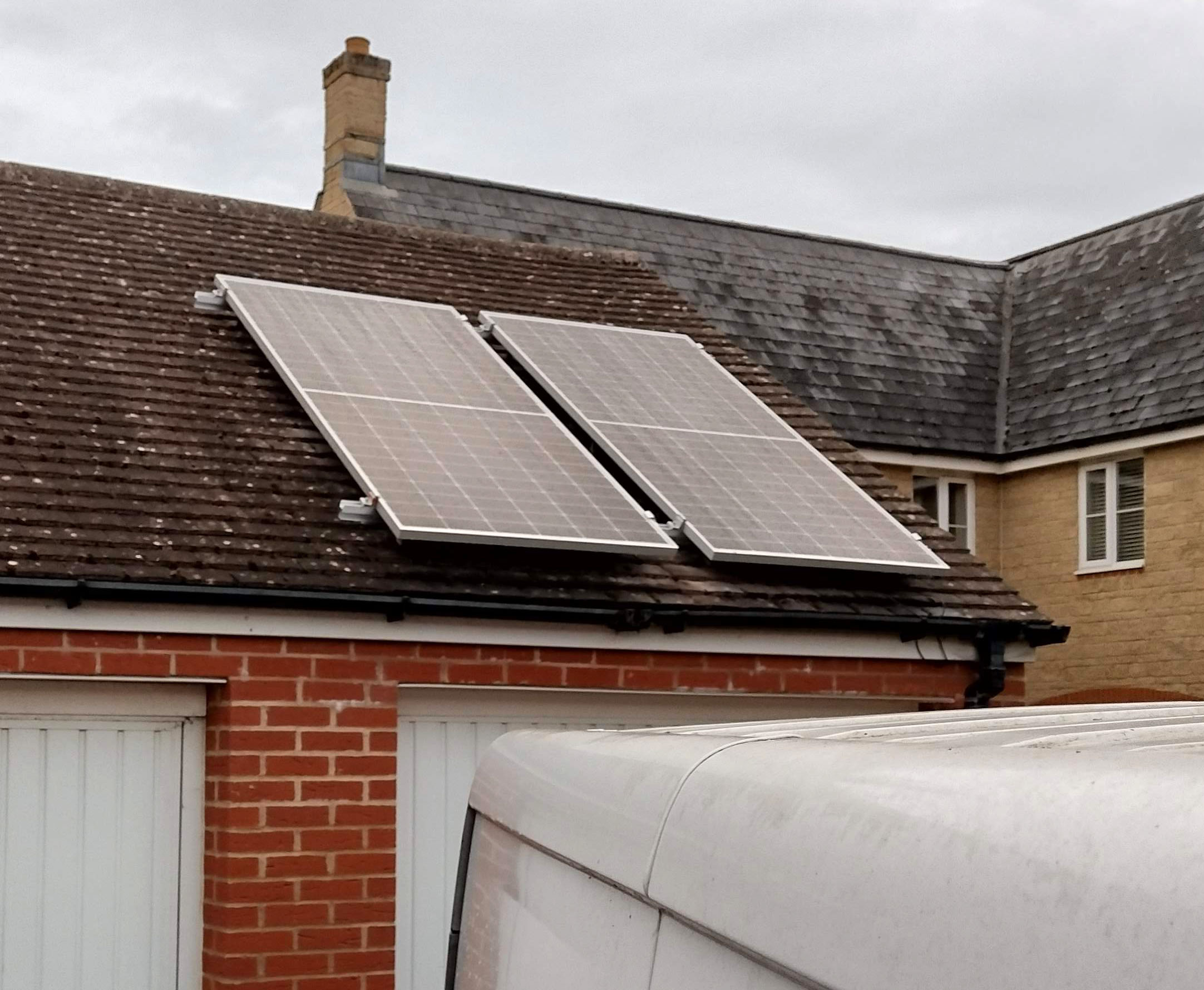For many, a low level solar installation will be idea, with power in the garage fairly common why not fit solar there, and what type of thing should I?
While the garage is fairly small you can maximise the panels and off-set a great deal of the power used in the home or all of it. This type of installation can also be a BESS.
A BESS or Battery Energy Storage System is a installation of a Hybrid inverter with or without token solar.
The primary source of energy comes from the grid and may appeal to traders.
The systems battery is charged a cheap rate and discharged through-out the day and night when the rates would be more.
Lets take for example that you have 20Kwh of battery storage. You could buy power at 6 pence a Kwh.
So you charge your battery for £1.20.
You then discharge while the rate is £0.30 Kwh.
The cost of that power would have been £6.00, so you save £4.80 every day.
The cost of 20Kwh battery is around £3,200, so you would have reached the zero point in 667 days ( less than two years)
BESS Balance.
If you consider “token solar” which is a small solar array. And if the solar would meet the general day time loads. You are extending the battery power delivery or if you have excess then reducing charging from the grid.
This is to say that you have a 600wh load all day, your solar array is 1000w, and for the most part makes 600w from 0800 to 1600. Then the power comes from solar, you do not need to account for this total (kWh) in battery storage to meet your daily power usage.
The power made in the day amounts to 4800w per day; Now if you have 9Kwh daily load, you would come up short 4.2Kwh. You would then take from the grid at cheap rate.
Remember that the daily load can be taken direct from the solar and not the battery.
Note that your solar in normal operation should account for the load used during the day and the battery recharge requirement.
Therefore the BESS balance is to reduce the peak rate use or the day use with token solar. The excess recharging the battery. This reduces the grid load day and night, the day time battery loads, and reduces the charge at cheap rate.
Grid Tied
Grid Tied small solar is one of the grey areas of solar when you have an “off set” solar system.
You would want to keep solar to a minimum and yet meet a majority of the power loads.
By using a grid tied inverter of 1.2Kw you can only save 1.2kwh at best.
This saving only works if you are using the power that you are making.
If you are out all day, then the installation should be scaled to meet the base loads this can be as low as 200w. At weekends you may be at home using things that may reach 2kw like the kettle, also if you have a washing machine or drier, you can use the timer function to wash and dry your clothes on “green energy”.
Even with a small inverter saving 50% on washing in a busy home does add up. Together with the base load this can be a nice little off-set.
The ROI is from 200 days, it can be up to 3 years, but there is a lot of factors to consider in how value able this is for you.
If you look at BESS, this can be more attractive, however we did not include the inverter costs there. but the initial levels of costs are vastly different, at around £6,000 for BESS compared to around £750 for grid tied.
In summary, BESS plays a crucial role in managing energy fluctuations, reducing costs, and promoting sustainability. Whether through grid-tied systems or token solar, these innovations contribute to a greener energy landscape.
Both BESS and grid-tied solar have their advantages and considerations. While BESS offers attractive features, the cost difference between the two options is substantial. Choose the solution that aligns best with your energy needs and financial goals.

2 Responses
Your mode of explaining the whole thing in this post is really nice, all be capable of effortlessly
understand it, Thanks a lot https://missgriffintown.com/
[…] pergola Solar Porch Solar Garage Solar […]